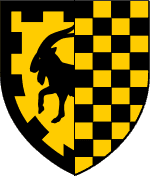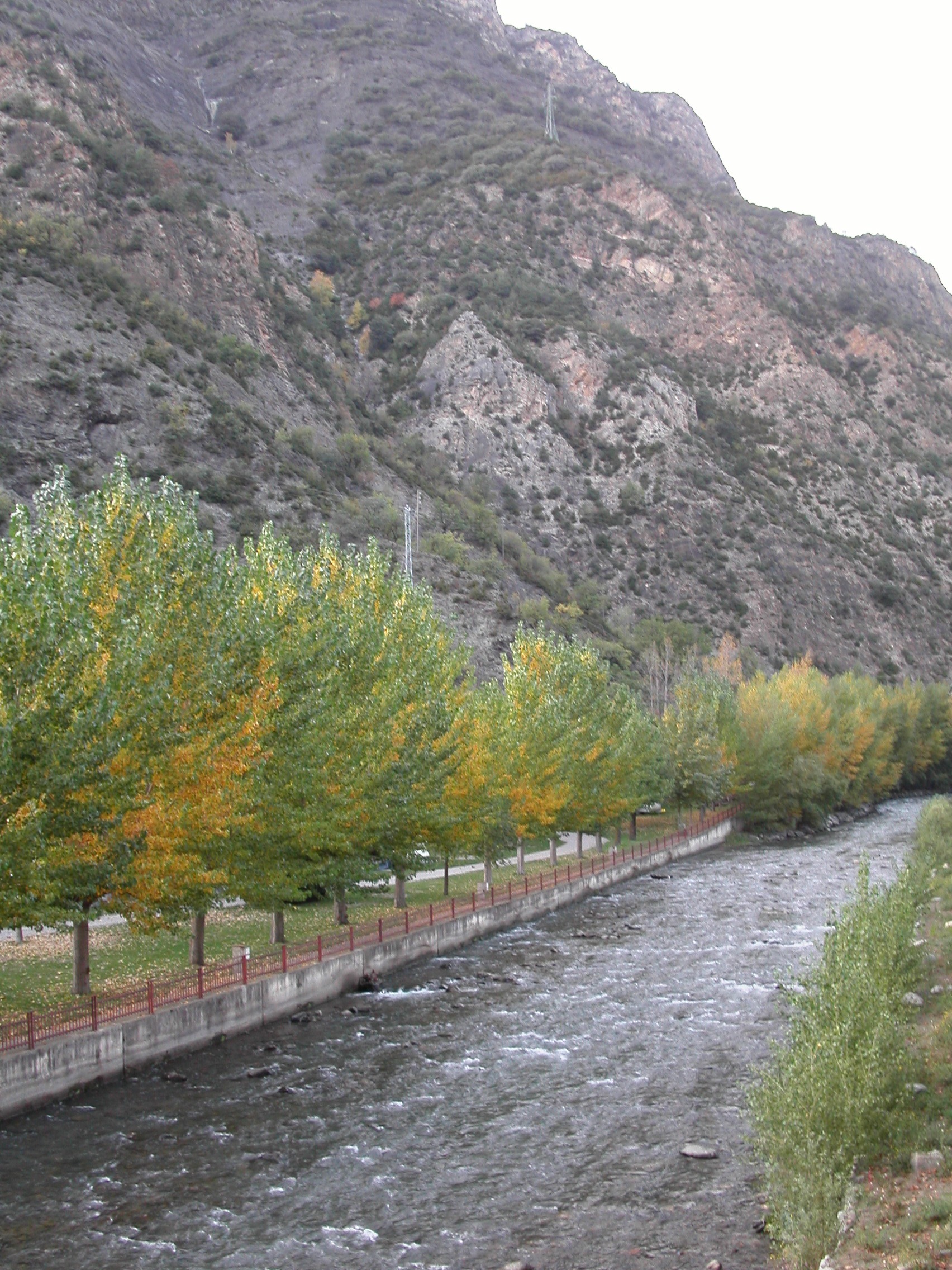|
La Seu D'Urgell
La Seu d'Urgell (; es, Seo de Urgel, formerly in ca, Urgell}) is a town located in the Catalan Pyrenees in Spain. La Seu d'Urgell is also the capital of the comarca Alt Urgell, head of the judicial district of la Seu d'Urgell and the seat of Bishop of Urgell, one of the Andorra co-princes. It is in the district of Alt Pirineu i Aran (''High Pyrenees and Aran''), and is the town with the most inhabitants, having 17.4% of the district population. La Seu d'Urgell and Puigcerdà together have 30% of the population of the area. It is located at the confluence of the Segre and the Valira rivers.GGCC, la Seu d'Urgell: Urban morphology. The city is in the local region of Urgellet, a [...More Info...] [...Related Items...] OR: [Wikipedia] [Google] [Baidu] |
Municipalities Of Catalonia
Catalonia is (as of 2018) divided into 947 Municipalities of Spain, municipalities. Each municipality typically represents one significant urban settlement, of any size from village to city, with its surrounding land. This is not always the case, though. Many municipalities have merged as a result of rural depopulation or simply for greater efficiency. Some large urban areas, for example Barcelona, consist of more than one municipality, each of which previously held a separate settlement. The Catalan government encourages mergers of very small municipalities; its "Report on the revision of Catalonia's territorial organisation model" (the ""), published in 2000 but not yet implemented, recommends many such mergers. Larger municipalities may sometimes grant the status of ''minor local entity, decentralised municipal entity'' ( ca, EMD, es, EATIM) to one or more of its settlements, for more effective provision of services or to substitute for its previous status as a separate mun ... [...More Info...] [...Related Items...] OR: [Wikipedia] [Google] [Baidu] |
Andorra
, image_flag = Flag of Andorra.svg , image_coat = Coat of arms of Andorra.svg , symbol_type = Coat of arms , national_motto = la, Virtus Unita Fortior, label=none ( Latin)"United virtue is stronger" , national_anthem = "The Great Charlemagne" , image_map = Location Andorra Europe.png , map_caption = , image_map2 = , capital = Andorra la Vella , coordinates = , largest_city = capital , official_languages = Catalan , ethnic_groups = , ethnic_groups_year = 2017 , religion = Christianity (Catholicism) , religion_ref = , demonym = Andorran , government_type = constitutional elective diarchy , leader_title1 = Co-Princes , leader_name1 = , leader_title2 = Representatives , leader_name2 = , leader_title3 = Prime Mini ... [...More Info...] [...Related Items...] OR: [Wikipedia] [Google] [Baidu] |
Diocese Of Urgell
The Diocese of Urgell is a diocese in Catalonia (Spain) and Andorra in the historical County of Urgell,"Diocese of Urgell" '' Catholic-Hierarchy.org''. David M. Cheney. Retrieved February 29, 2016"Diocese of Urgell" ''GCatholic.org''. Gabriel Chow. Retrieved February 29, 2016 with origins in the fifth century AD or possibly earlier. It is based in the region of the historical County of Urgell, though it has differ ... [...More Info...] [...Related Items...] OR: [Wikipedia] [Google] [Baidu] |
Saint Ermengol
Saint Ermengol (also ''Armengol'' or ''Armengod'') or Hermengaudius (died 1035) was the bishop of Urgell from 1010. Possibly born in the village of Ayguatébia, he was the son of Bernat I, viscount of Conflent, and of his wife Guisla de Lluçià, and also the nephew and successor of Bishop Sal·la and a member of the family of the counts of Conflent.''The Bishop Builds a Bridge: Sanctity and Power in the Medieval Pyrenees'', Jeffrey A. Bowman, The Catholic Historical Review, Vol. 88, No. 1 (Jan., 2002), 1-3. By 1002 Ermengol was an archdeacon and the following year the Bishop of Urgell, Sal·la, had made arrangements for Emermengol to succeed him. He began his episcopate by reforming the cathedral canons, along the lines of the life of Saint Augustine of Hippo, and granting them land in Vallespir, Cerdanya, and Alt Urgell. In 1012, he travelled to Rome for an audience with Pope Benedict VIII,Or possible 1011 for an audience with Sergius IV. who confirmed the possessions of his ... [...More Info...] [...Related Items...] OR: [Wikipedia] [Google] [Baidu] |
Virgin Of Núria
Virginity is the state of a person who has never engaged in sexual intercourse. The term ''virgin'' originally only referred to sexually inexperienced women, but has evolved to encompass a range of definitions, as found in traditional, modern and ethical concepts. Heterosexual individuals may or may not consider loss of virginity to occur only through penile-vaginal penetration, while people of other sexual orientations often include oral sex, anal sex, or mutual masturbation in their definitions of losing one's virginity. There are cultural and religious traditions that place special value and significance on this state, predominantly towards unmarried females, associated with notions of personal purity, honor, and worth. Like chastity, the concept of virginity has traditionally involved sexual abstinence. The concept of virginity usually involves moral or religious issues and can have consequences in terms of social status and in interpersonal relationships.See her anpages ... [...More Info...] [...Related Items...] OR: [Wikipedia] [Google] [Baidu] |
Saint Sebastian
Saint Sebastian (in Latin: ''Sebastianus''; Narbo, Gallia Narbonensis, Roman Empire c. AD 255 – Rome, Italia, Roman Empire c. AD 288) was an early Christian saint and martyr. According to traditional belief, he was killed during the Diocletianic Persecution of Christians. He was initially tied to a post or tree and shot with arrows, though this did not kill him. He was, according to tradition, rescued and healed by Saint Irene of Rome, which became a popular subject in 17th-century painting. In all versions of the story, shortly after his recovery he went to Diocletian to warn him about his sins, and as a result was clubbed to death. He is venerated in the Catholic Church and the Orthodox Church. The oldest record of the details of Sebastian's martyrdom is found in the '' Chronograph of 354'', which mentions him as a martyr, venerated on January 20. He is also mentioned in a sermon on Psalm 118 by 4th-century bishop Ambrose of Milan (Saint Ambrose): in his sermon, Amb ... [...More Info...] [...Related Items...] OR: [Wikipedia] [Google] [Baidu] |
Ot Of Urgell
Saint Odo of Urgell ( ca, Ot, Odó or Dot es, Odón) (c. 1065 – 1122) was a bishop of Urgell, noted for his care for the poor. He was from the family of the counts of Pallars Sobirà. He is buried in the monastery of Santa Maria de Gerri. In 1133 his successor declared him to be a saint, and he is venerated as such today. Odo is one of the patron saints of the town of La Seu d'Urgell La Seu d'Urgell (; es, Seo de Urgel, formerly in ca, Urgell}) is a town located in the Catalan Pyrenees in Spain. La Seu d'Urgell is also the capital of the comarca Alt Urgell, head of the judicial district of la Seu d'Urgell and the seat of B .... His feast day is July 7. References External links Catholic.org - Saint Odo of Urgell 1060s births 1122 deaths Catalan Roman Catholic saints Bishops of Urgell Medieval Spanish saints People from the Province of Lleida 11th-century Roman Catholic bishops in Spain 12th-century Roman Catholic bishops in Spain {{spain-saint-stub ... [...More Info...] [...Related Items...] OR: [Wikipedia] [Google] [Baidu] |
County Of Urgell
The County of Urgell ( ca, Comtat d'Urgell, ; la, Comitatus Urgellensis) is one of the historical Catalan counties, bordering on the counties of Pallars and Cerdanya. History The county of Urgell was carved by the Franks out of a former section of the Mark of Toulouse when the Alt Urgell area became part of the Carolingian Empire between 785 and 790. The original territory was made up of the Alt Urgell, also known as Urgellet from the end of the 12th century onwards, with the see at La Seu d'Urgell. From 839 onwards it would include 129 villages, the valleys of the Valira river, namely Andorra and Sant Joan Fumat, the Segre riverine area as well as the valleys located between El Pont de Bar and Oliana. Its maximal extension territory was between the Pyrenees and the taifa of Lleida, that is, the current comarques of Alt Urgell or Urgellet, Noguera, Solsonès, Pla d'Urgell, Baix Urgell and the still independent country of Andorra. The historical capital was first la Se ... [...More Info...] [...Related Items...] OR: [Wikipedia] [Google] [Baidu] |
Urgellet
Urgellet () is a historical territory and a natural region of Catalonia. It is located in the Pyrenees exactly in the actual administrative comarca of Alt Urgell, that last includes Baridà, Urgellet and the banks of Oliana, Peramola and Bassella. Geography The mountainous territory of Urgellet is almost wholly part of the Alt Urgell, except for the eastern Baridà and the southern sector. The Mollet Gorge is the natural boundary between the Urgellet and Baridà. The history of Urgellet is highly related to ''Sedes Urgelli'' (La Seu d'Urgell or city of Urgell), the Bishop of Urgell and the County of Urgell. In the latter case, the territory Urgellet was leading the county, with capital in la Seu d'Urgell, and extended southwards up to the comarques of Urgell and Pla d'Urgell, among others. For this reason some towns and two comarques in Lleida contain the name of ''Urgell'' that has its origin in the city of Urgell and Urgellet region. Etymology The name ''Urgell'' has a spec ... [...More Info...] [...Related Items...] OR: [Wikipedia] [Google] [Baidu] |
Valira River
The Gran Valira (, es, Río Valira) is the largest river in Andorra. It flows through the capital, Andorra la Vella, and exits the country in the south near the Spain–Andorra road border crossing. The Gran Valira is a tributary to the Segre, which in turn is a tributary to the Ebro. It flows into the Segre in La Seu d'Urgell. Its main tributaries are the Valira d'Orient, the Valira del Nord Valira may refer to: * Valira, Greece * Gran Valira, the largest river in Andorra , image_flag = Flag of Andorra.svg , image_coat = Coat of arms of Andorra.svg , symbol_type = Coat of arms , national_mo ... and the Madriu. The Valira river system is long.Atlas of Andorra (1991), Andorran Government. . The map service of the Andorran government calls it the Gran Valira. In certain sources, especially those with a Spanish influence such as maps published in Spain, it is sometimes referred to as the Valira because in the territory of Spai ... [...More Info...] [...Related Items...] OR: [Wikipedia] [Google] [Baidu] |
Segre River
The Segre ( or ; french: Sègre) is a river tributary to the Ebro (''Ebre'' in Catalan) with a basin comprising territories across three states: France, Andorra and Spain. The river Segre, known to Romans and Greeks as Sicoris, and to the Arabs of Al-Andalus as Nahr az-Zaytūn (نهر الزيتون, river of Olives) has its sources on the north face of the Pic del Segre or ''Puigmal de Segre'' ("Segre's Peak") in the French department Pyrénées-Orientales (historically the ''comarca'' of Alta Cerdanya), in the Catalan Pyrenees. It follows a western direction all along the Cerdanya (''Cerdagne'') Valley, and crosses the town Saillagouse, the Spanish exclave Llívia and Bourg-Madame. It enters Spain at Puigcerdà and continues west until La Seu d'Urgell, where it meets the Valira River coming from Andorra. From this point it adopts a south-western course across the pre-Pyrenees (with several dams along its gorges) and the western plains of Catalonia. It passes thro ... [...More Info...] [...Related Items...] OR: [Wikipedia] [Google] [Baidu] |


_-Youth_(1893).jpg)


